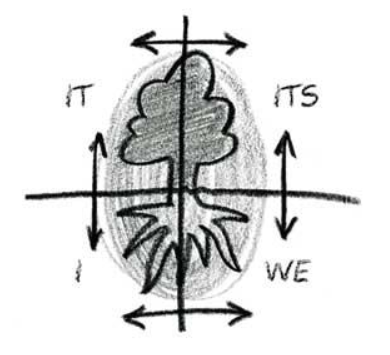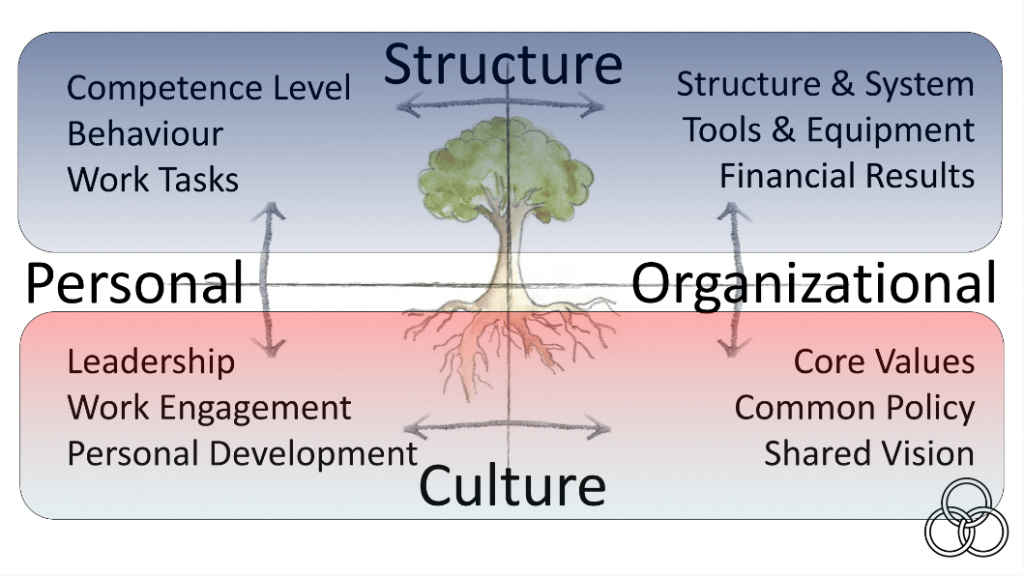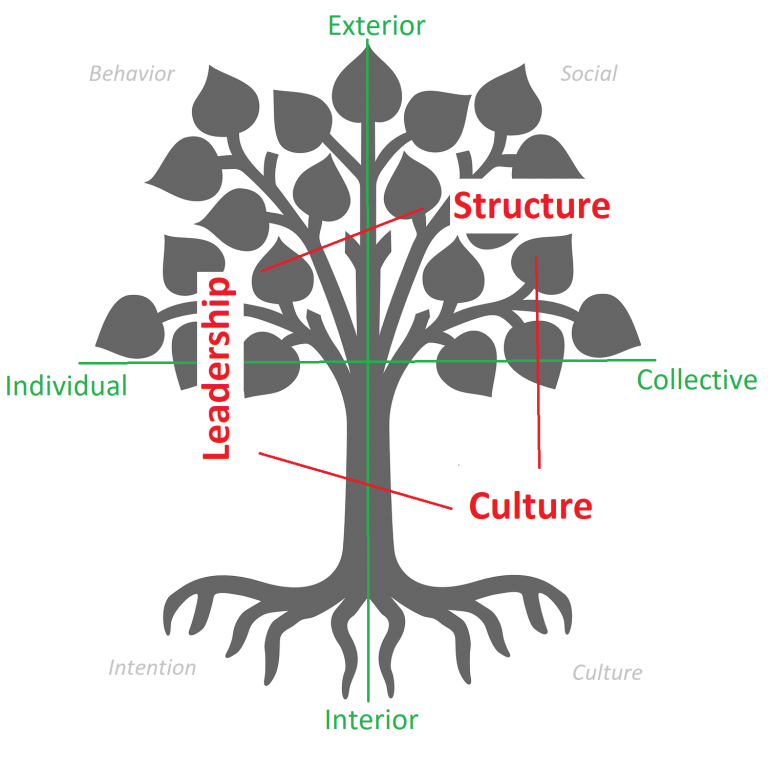
The Tree Metaphor
A holistic and non-dualistic worldview
The Tree Metaphor represents a holistic perception of the world. It describes how we make sense of the world and understand its patterns.
Ken Wilber’s AQAL model keeps the complexity of any living system, while explaining different functions that appear simultaneously in any given context.
As it describes a holistic worldview and does not reduce the complexity of a system, it thus provides an alternative to any linear model or perception of the world.
The Tree Metaphor provides us with fundamentally different assumptions about how we experience the world, and it provides an alternative to the machine metaphor that defines the paradigm that is currently phased out.

Four Quadrants in a context

The four quadrants of Ken Wilber’s AQAL model suggest the synthesis of all human knowledge and experience. It is organized around the two axis from individual to collective and from interior to exterior. The interior/individual quadrant covers the personal intention. It relates to the consciousness of self and strives for a holistic integration of the body, mind and soul – relating to emotions, rational thinking and spirituality. The exterior/individual quadrant describes the personal behavior. It relates to aspects as appearance, skills and performance. The interior/collective quadrant describes culture, which consists of worldviews, value systems, stories and narratives, as well as history. The exterior/collective quadrant reflects the structure of social systems or the environment. It includes policies and procedures as well as used technologies. Together the four quadrants form a comprehensive overview of all functions that are simultaneously present in a given context.
In order to make the abstract model applicable it has to be put into a context. As Emprogage is an organization lets use a business setting as the application area. The four quadrants provide a holistic perspective on an organization with its core elements Leadership (Self-awareness and behavior), Culture and Structure.
A frequently used metaphor to make the four quadrants less abstract is the tree. It has roots that are normally below the surface and not present to the eye. One could say they represent the ’internal’ world. The branches and leaves that are observable represent the ’external’ world. However, for the tree to exist both worlds have to exist simultaneously and need to be given equal attention.
An in-depth dialogue from our Emprogagers Stellan Nordahl and Jens Rinnelt about the Tree Metaphor is available from their FiDE broadcast, recorded during the Best for the World live broadcast hosted by Emprogage.
